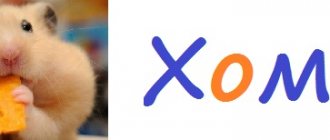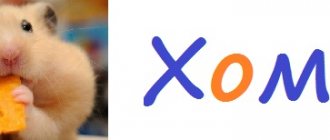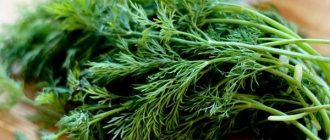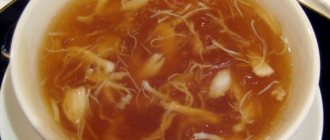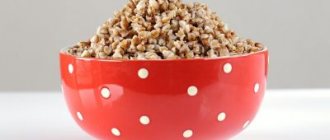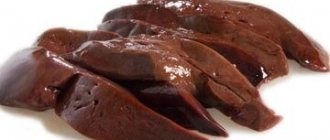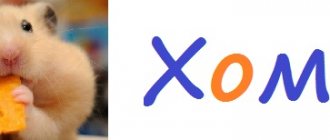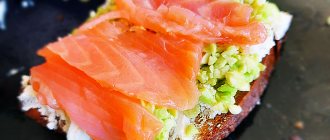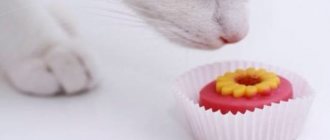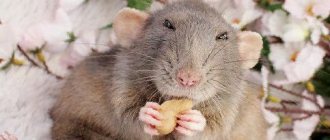- home
- Nutrition
29.03.2018
The usual diet for a hamster consists of grains mixed with healthy flakes. Many owners sometimes make changes in the form of lush greens or vegetables. But not all rodents are able to eat the food that humans prefer to buy. Can hamsters eat radishes? This article will tell you about the benefits and harms of the vegetable, as well as the effect on the animal’s body.
Is it possible to feed a hamster radishes?
The basis of the diet of domestic hamsters is a grain mixture. It contains vitamins and minerals necessary to maintain the vital functions of the pet. With such a mixture, the rodent practically does not need any feeding, with the exception of greens and vegetables. When choosing additional food, remember that it must correspond to what the animal eats in nature. As you know, wild hamsters are omnivores, but feed primarily on the gifts of nature. Therefore, the food from our table will not suit them, since it contains a lot of salt, spices, chemicals and other ingredients that are unhealthy for the baby’s body. But be sure to include what grows in our beds in your pet’s diet, for example, radishes. This green vegetable is rich in vitamins and microelements that have a positive effect on the health of the rodent.
Harm
It is not recommended to feed hamsters vegetables purchased in supermarkets, as they may be treated with nitrates and pesticides. This will shorten the pet’s already short life. If it is not possible to grow the root vegetable yourself, then soak it in water for an hour before feeding. This will help rid the vegetable of excess chemicals. Please note that poorly washed root vegetables can cause an intestinal infection.
What harm can this product cause to a pet’s body if it is grown in a home garden? The harm of this root vegetable is its pungency. If you feed your hamster regularly, it can lead to diseases such as:
- Peptic ulcer;
- Gastritis;
- Thyroid disease;
- Goiter formation.
But these diseases are only possible if you feed the hamster root vegetables in large quantities. Also be aware that excessive consumption of this product may cause diarrhea or diarrhea. Therefore, pamper your pet with radishes once or twice a week. In this case, the vegetable will bring undeniable benefits.
Benefit
The benefits of radishes are undeniable. It contains microelements such as phosphorus, calcium, magnesium, sodium, iron, natural fiber, B vitamins and vitamin C. The value of the product for the rodent’s body lies in its following properties:
- Thanks to the vitamin C it contains, it strengthens the immune system and helps the animal’s body fight colds. In the spring-autumn period, the root vegetable can be given as a prevention of vitamin deficiency.
- Be sure to pamper your pregnant female with this delicacy, because during pregnancy her body needs additional vitamins and minerals. For example, folic acid contributes to the proper intrauterine development of babies.
- Moderate consumption of the product has a positive effect on the functioning of the animal’s cardiovascular system.
- It has choleretic properties and effectively cleanses the liver.
- Normalizes metabolism.
- Improves blood circulation.
- Prevents the development of diabetes. This disease is common among hamsters.
- The root vegetable is rich in fiber. For animals suffering from constipation and bloating, the product is simply irreplaceable.
- It is useful for rodents with excess body weight, as it contains a minimal amount of calories, only 15 per 100 g. Improves metabolism and removes toxins.
- Pectin, which is part of the vegetable, helps cleanse the animal’s body of toxins.
- It is known that animals in old age often lose their appetite; mustard oil contained in the vegetable helps awaken the appetite.
Are radishes allowed for pets?
Next, we will consider whether radishes can be eaten by various animals.
For dogs
For dogs such as Yorkshire Terriers, it is perfectly acceptable to add small amounts of fresh radishes to their diet periodically. A small portion of finely chopped vegetables is added to food no more than once a week.
The benefits of radishes for dogs are that the coarse, indigestible fibers act as a toothbrush for the mouth and a source of fiber for the gastrointestinal tract.
Radish tops, as a vitamin supplement, are suitable for:
- feeding to puppies;
- lactating bitches;
- young dogs.
Hamsters
This root vegetable is well suited for hamsters of any breed:
- Syrian;
- Dzungarian;
- Roborovsky, etc.
Radishes are rich in vitamins, minerals and fiber, which are very beneficial for animals. The main thing is not to overfeed hamsters with radish - in reasonable quantities it will be beneficial, but in unlimited access it can cause problems with the gastrointestinal tract (bloating, flatulence, abdominal pain).
The root vegetable is cut into small pieces and fed to rodents mixed with other fresh vegetables. It is not recommended to add radishes to your hamster every day. Fresh green tops are good food for rodents , the main thing is not to forget to wash them thoroughly.
Rabbits
Radishes can and should be given to rabbits raised for meat. The root vegetable begins to be gradually added to food from an early age, in crushed form. After three months, rabbits can be fed whole radishes, increasing their content in the diet. The tops of the plant are added to silage and hay, but for this they must be slightly dried.
For decorative rabbits, the root vegetable is also suitable as food. Pets can be fed young peeled radishes. Before feeding rabbits, the tops are added to various green salads.
From the video you will find out whether you can give radishes to rabbits and how to do it:
Guinea pigs
Radishes belong to the cruciferous family.
Vegetables from this family are not recommended for guinea pigs. Radish fruits can cause serious intestinal problems in guinea pigs. The root vegetable contains essential oils that irritate the mucous membranes and respiratory tract of rodents. However, the tops of the plant are quite suitable for consumption. The high vitamin C content makes radish tops a healthy treat for your guinea pig. It is important to correctly introduce radish tops into the diet:
- Only fresh tops are used for feeding.
- Tops are added to the diet of guinea pigs maximum once a week.
- If alarming signs appear in an animal after eating the plant, it is necessary to stop adding tops to its food.
Parrots
Radish roots are strictly prohibited for parrots , as they have coarse fibers that negatively affect the mucous membrane of the gastrointestinal tract. After eating this vegetable, the parrot runs the risk of developing stomach and intestinal diseases and may require treatment.
Radish tops in small quantities can sometimes be added to a parrot's diet along with other greens. The leaves must be young and fresh.
Rats
Radishes have a too pungent taste and cause intestinal problems, so the root vegetables are not recommended for rats. As a green supplement, you can occasionally add tops of the root vegetable; young leaves do not have such a pungent taste as radish roots. Moderate consumption of the green part of the plant will not harm the rat's digestion.
To snails
It is not recommended to feed radish roots to snails , as they are too spicy for pets. Radishes contain mustard oil, which can adversely affect the snail's digestion. Young radish tops are a good option for feeding Achatina, the main thing is that the greens are well washed and not rotten.
What vegetables can you give your hamster?
All vegetables are best fed to the hamster raw. Any heat treatment significantly reduces the amount of nutrients and vitamins. It is also preferable to give your hamster vegetables that are grown in the garden.
What vegetables can a hamster eat:
- Carrot;
- Cucumber;
- Tomato;
- Zucchini;
- Pumpkin;
- Bell pepper;
- Beet;
- Turnip;
- Radish;
- Celery;
- Cauliflower;
- Chinese cabbage;
- Broccoli;
- Eggplant.
Some vegetables need to be given to your hamster daily: carrots, cucumber, bell pepper, zucchini, pumpkin. It is recommended to feed other vegetables 1-2 times a week: tomato, cauliflower, turnip, radish.
Hamsters are very active rodents that are nocturnal. There are several opinions about the best time to give your hamster vegetables. Some are of the opinion that vegetables should be fed in the first half of the day, others advise feeding them in the late afternoon, when the rodent’s activity increases.
Radish in the diet of various animals. Is it possible to give the root vegetable to guinea pigs and other pets?
For easy and healthy feeding of animals of all types, there is a wide range of ready-made feeds.
But many owners prefer to feed their pets more natural food. Radishes can be considered such food, but they are not equally beneficial for all animals. Read further whether radishes are allowed for such animals as hamsters, rabbits, guinea pigs, dogs, parrots, domestic rats and snails, and also find out what will happen if your pet eats a prohibited root vegetable.
Benefits of radishes for a hamster
The vegetable combines important microelements and vitamins, normalizes the digestion of food and cleanses the body. To understand the question of whether radishes can be eaten by hamsters, you first need to know its advantages over other products of plant origin:
- Strengthening the immune system. Due to the presence of vitamin C. Radish copes well with vitamin deficiency in the spring.
- Fetal development. Recommended for use during pregnancy. The baby's development will proceed more quickly.
- The cardiovascular system. In moderate quantities, it can dilate the animal’s blood vessels and improve blood flow, but it should not be abused.
- Liver cleansing.
- Diuretic effect when consumed in large quantities.
- Normalization of metabolism.
- Warns against the development of diabetes. It is worth noting that this is a very common occurrence in hamsters.
- Losing weight. Many hamsters suffer from obesity. Unlike grains and flakes, radishes contain minimal calories.
- Pectin to cleanse the digestive system. Able to normalize the digestive tract.
- Feeding in old age. Old individuals often lose their appetite and stop eating normally. Due to the presence of mustard oil in the product, you can increase the animal's appetite.
Having learned the advantages of this product, it is worth mentioning a small list of its disadvantages.
Consequences of eating prohibited root vegetables
When animals eat radishes, the following signs may be observed:
- Increased gas formation, bloating.
- Diarrhea, abdominal pain.
- Vomit.
In advanced cases of flatulence, negative consequences may develop, for example, volvulus. In this case, surgical intervention is required.
If there are warning signs, you can take the following actions:
- Gastric lavage in large animals.
- You can give the affected animal medications that eliminate flatulence and bloating.
- Feeding something sweet will partially neutralize the mustard oil found in radishes.
- The use of enveloping agents also has a positive effect.
Vitamins, mineral supplements and treats
For the proper development and full functioning of the body of Syrian hamsters, it is necessary not only to feed them in a balanced manner, but also to provide them with special fortified preparations. They are available in solid and liquid form and are mixed into the animal’s drink or food.
A mineral stone is also placed in the pet's cage. It will not only help sharpen the incisors, but also enrich the body with essential substances. Pregnant females are given a chalk stone, which can have a fruity or herbal flavor and will provide the expectant mother with calcium and other trace elements.
As treats for your Syrian hamster, you can eat rose petals, unbuttered and salt-free popcorn, dried fruits, cereal sticks and fruit chips.
Dried fruits
Hamsters can occasionally be pampered with dried fruits (dried apricots, raisins, fruit chips). But you can’t get carried away with them, since the sugar content in them is high. In addition to raisins, Syrian hamsters are given a little dried apricots. For miniature jungarians, who are more prone to obesity, it is better to offer less sweet dried pieces of apples or bananas. But prunes are contraindicated for hamsters; it is better to avoid them completely.
Banana chips are already included in some ready-made feed mixtures.
Composition of the fruit
Apple fruits are considered one of the most common in temperate regions. There are many varieties of apples and all of them are beneficial for the human body. But is it possible to give hamsters apples and how beneficial are they for the small rodent’s body?
The fruits of the fruit tree are a valuable source of ascorbic acid, potassium and iron. In addition to these useful components, the apple contains zinc and copper.
Varieties grown in the southern regions have a moderate content of fructose and sucrose. Apple trees growing in the north produce fruits with high acidity.
Syrian breed
The most common and no less intriguing type. Easy to train. Maintenance is not difficult. It has four toes on the front toes and 5 on the back. The largest of all types of domestic hamsters. Mainly has a golden color. An adult reaches a length of twelve centimeters. The body is plump like everyone else. In everyday life, animals often reach twenty centimeters. Males weigh one hundred twenty grams, and females one hundred and forty. Individuals twenty centimeters in length reach a weight of two hundred grams.
When leaving, the main factor is peace of mind. Under no circumstances should you take your pet out of its cage when there are many people in the room. The noise scares him, he begins to get nervous, and may bite or get sick.
How to prepare food?
Everything should be of the first freshness. Cook the food for up to ten minutes. Salt is prohibited; hamsters are not allowed spices. Everything should be fresh. If food is stale, it should not be given under any circumstances. In such supplies, tissue begins to rot and bacteria multiply. You may be poisoning your hamsters without knowing it. Moreover, you should not cut off part of the moldy fruit and give the rest to the animal. In the best case scenario, your pet will end up with diarrhea. You can offer only washed products.
Feeding rules
These rodents are active in the dark. Therefore, it is more correct to feed the Syrian hamster at home in 2 stages. In the morning, very little food is poured into their bowls, and the bulk is given in the evening.
Hamsters hide uneaten leftovers in secluded places. Therefore, their homes must be constantly cleaned of spoiled food.
Pregnant and lactating females should eat protein foods. During this period, they need to be fed boiled yolk, greens, sprouted cereals, low-fat cottage cheese, boiled chicken and insects.
Older Syrian hamsters eat worse than young ones. Therefore, dairy-free infant formula is being added to their menu. Also, aging animals can be fed with pureed vegetables and ground grain.
Syrian hamsters are cute decorative animals that give their owners a lot of positive emotions. And so that they do not have health problems, they are provided with high-quality and properly balanced food.
Source
